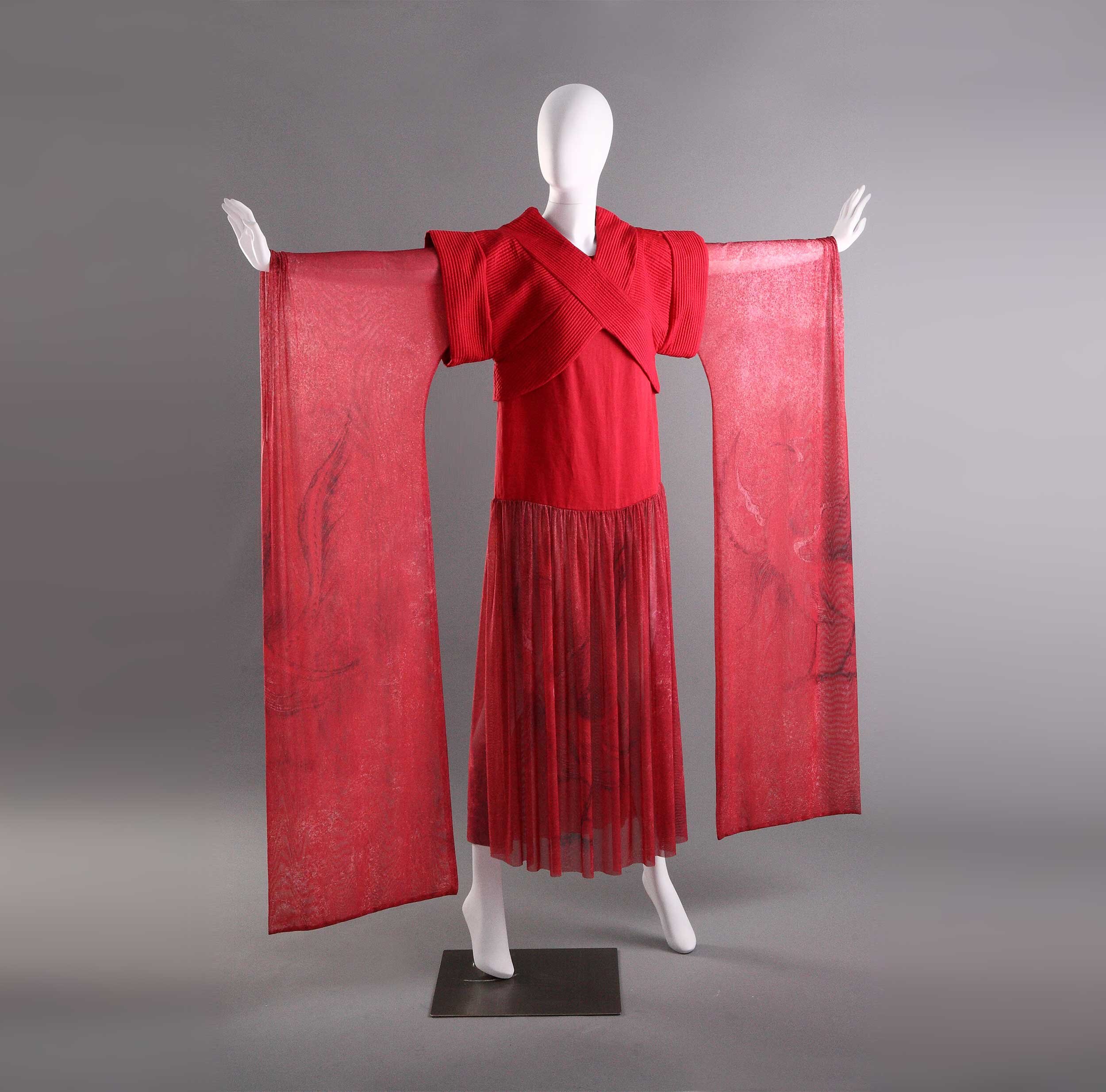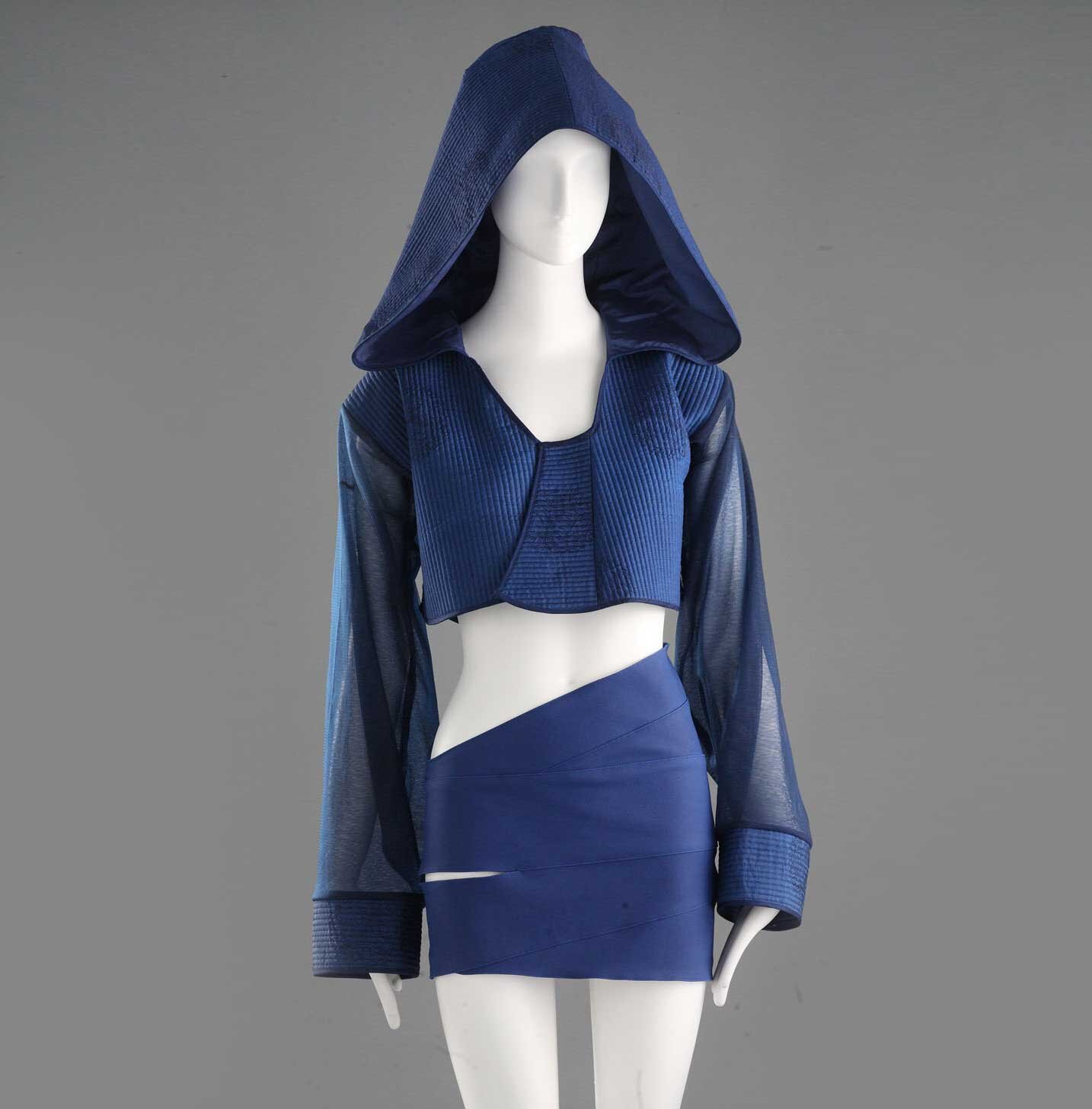

FIVE PHASES
–
ENDLESS CYCLE OF CREATION AND DESTRUCTION
SOLO ExhibitioN
JUNE 21 – 25, 2012
Inno Centre,
Hong Kong
–
SOLO ExhibitioN
SEPT 3 – OCT 11, 2013
The Fashion Gallery,
The Hong Kong Polytechnic University,
Hong Kong
This exhibition Five Phases: Endless Cycle of Creation and Destruction is a part of a research project that aims to examine how the different established perspectives toward the body in Eastern and Western cultures affected dress style in terms of content and form before the westernization of modern fashion, as well as the way these perspectives continue to be expressed in current fashion design. The Eastern perspective of the body is informed by the Eastern way of thinking, shaped by three major philosophies: Confucianism, Taoism, and Buddhism. Taoism deeply penetrated into the spiritual and practical aspects of everyday life. In particular, the principles of yin-yang and Five Phases provided the fundamental framework of the Eastern perspectives toward nature and human affairs. As harmony and unity between humans and the universe was emphasized as the core of Taoist life, the body was naturally envisioned as “the gate of harmonious union of yin and yang,” [1] and perceived as an “interface of interior and exterior” worlds [2]. Many scholars agreed that physical and anatomical representations of the body were rarely found in Eastern art unlike its western counterpart and that the body represented in Chinese art becomes invisible because it either is integrated into or interacts with the dress [3]. This fascinating relationship between the body and dress not only provides the creative platform for the concept of this exhibition, but also enables to incorporate the beauty of Eastern traditional dress. Korean traditional dress hanbok has been selected as a source of inspiration for the many ways it displays unique combinations of line and shape.
In addition, the various aspects of the Five Phases theory transformed into essential design elements for this project. The colors and motifs chosen are the five colors and four heavenly creatures- blue dragon (靑龍), white tiger (白虎), red phoenix (朱雀), and black tortoise (玄武). Transferred from the mural paintings of the Complex of Goguryeo Tombs [5] onto the various surfaces of the works by digital printing, known as one of the most innovative inventions of the late 20th century, these magnificent creatures travel across the time and come into being once again.
This exhibition Five Phases (五行): Endless Cycle of Creation and Destruction attempts not only to develop the way how the Eastern perspectives of the body and dress can be interlaced with modern fashion design elements, but also to present an opportunity for the viewers to witness how an ancient underlying philosophy of the Eastern culture can be embodied in the form of creative fashion art.
References
Schipper, K., 1993. The Taoist Body. Translated by K.C. Duval, Berkeley; Los Angeles; London: University of California Press.
Zito, A. n.d. Silk and Skin: Significant Boundaries. In: A. Zito and T.E. Barlow, ed. 1994. Body, Subject & Power in China. Chicago: The University of Chicago Press.
Hay, J. n.d. The Body Invisible in Chinese Art? In: A. Zito and T.E. Barlow, ed. 1994. Body, Subject & Power in China. Chicago: The University of Chicago Press.
Goguryeo (37 BCE~668 CE) is one of the Three Kingdoms of Korea along with Baekje (18 BCE~660 CE) and Silla (57 BCE~ 935 CE). The Complex of the Goguryeo Tombs became the UNESCO World Heritage Site in July 2004. Source of these images is Cultural Assets and Sites in North Korea edited by Joseon Relics and Sites Compilation Committee. This book is published by Seoul National University Press in 2000.














